We try and bring Glory to Rome…
…just 7 days after telling the Romans to Go Home!
In 64 A.D., a great fire originating from the slums of Rome quickly spreads to destroy much of the city, including the imperial palace. Upon hearing news of the fire, Emperor Nero Caesar races back to Rome from his private estate in Antium and sets up shelters for the displaced population. Reporting directly to Nero, you are responsible for rebuilding the structures lost in the fire and restoring Glory to Rome.
I already wrote about Uchronia which is a reimplementation of this game. These games are very simple in gameplay… You have a board which is where you keep the cards you play in their respective areas, it also has all the rules on it which is really nice.
You keep the cards in different areas because each card counts as multiple things and depending on where you put them is what you’re using them for.
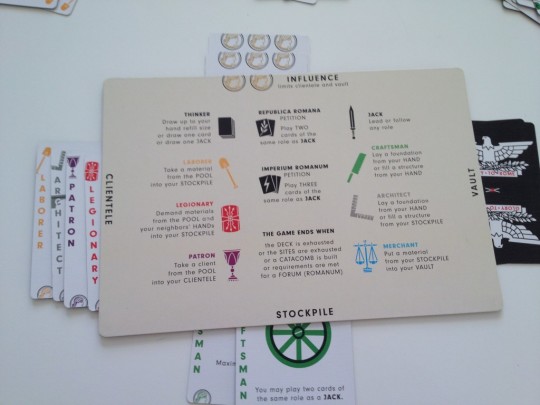
Roles
On your turn, you take one of the roles by discarding a card matching the colour of the role you wish to play into the Pool in the middle of the table.
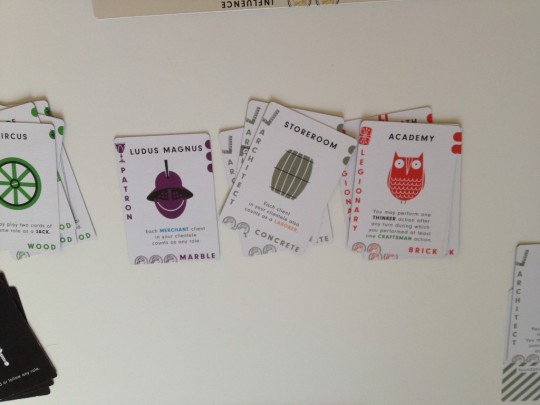
The first action, The Thinker, defies this by just letting you draw cards rather than discarding first… Glad we got that one out the way.
The Labourer action lets you take cards from the Pool to your Stockpile, turning that card into a resource you use later for a building.
The Legionary action lets you reveal a card from your hand to take cards of that type from the Pool, or other players’ hands, into your Stockpile.
The Patron action allows you to take a card from the pool into your Clientèle. Cards here let you take an extra action of that type when you take it. So if you have a Patron in your Clientèle and play the Patron action, you’ll take 2 cards from the Pool.
The Merchant lets you put cards from your Stockpile into your Vault for end-game scoring.
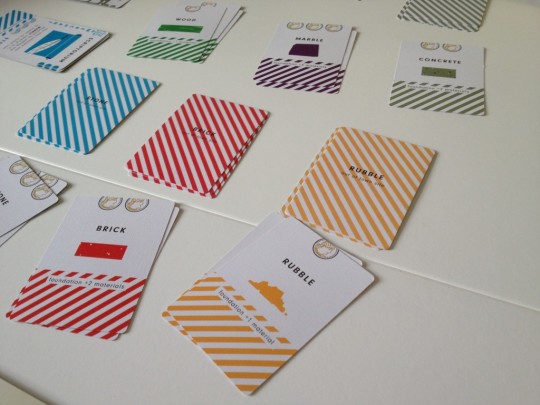
The Craftsman lets you start building something by using a card in your hand. This card is a building and is put on a foundation (shown in the pic above). You can also place a Material from your hand onto an existing foundation.
The Architect is the same as the Craftsmen but you use materials from the Stockpile instead.
Building
If you finish a building you put the Foundation you used into your Influence for end-game scoring. It increases the number of cards you can have in your Clientèle and Vault.
The building itself is used for in-game effects and end game scoring too.
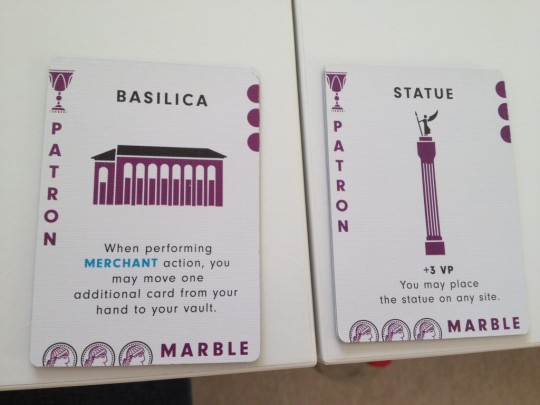
When the main player takes an action, each player can discard a card of the correct colour. If they do they take the action too, or ‘Think’ and draw a cad.
When the main deck runs out the game ends.
I was actually winning on points by a long way when the game ended and I had defeat thrust upon me by an Alternate Win Condition.
Glory to Rome Summary
Ah well…
I do think I prefer the look, and art, of Uchronia. In fact, these games are so similar and so good I’ll sign off with the same words as I did the first time around. They are still true today. (Except the Glory to Rome iconography isn’t as good :))
I really liked this game because I know when a game ends and I want to play it again. This either means I enjoyed it, or I messed up somewhere and want a second chance.
I loved the mechanics, the moderate level of interactivity and the intuitive iconography.
Very good game.
Mottainai anyone?
Jesta ThaRogue
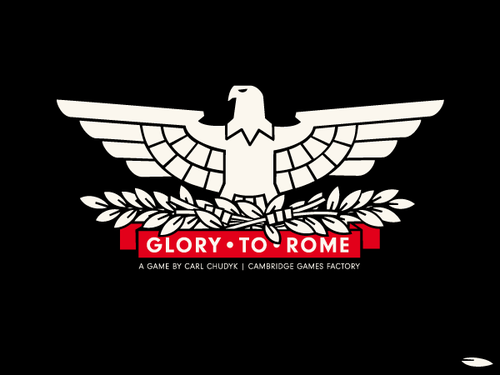


Leave a Reply